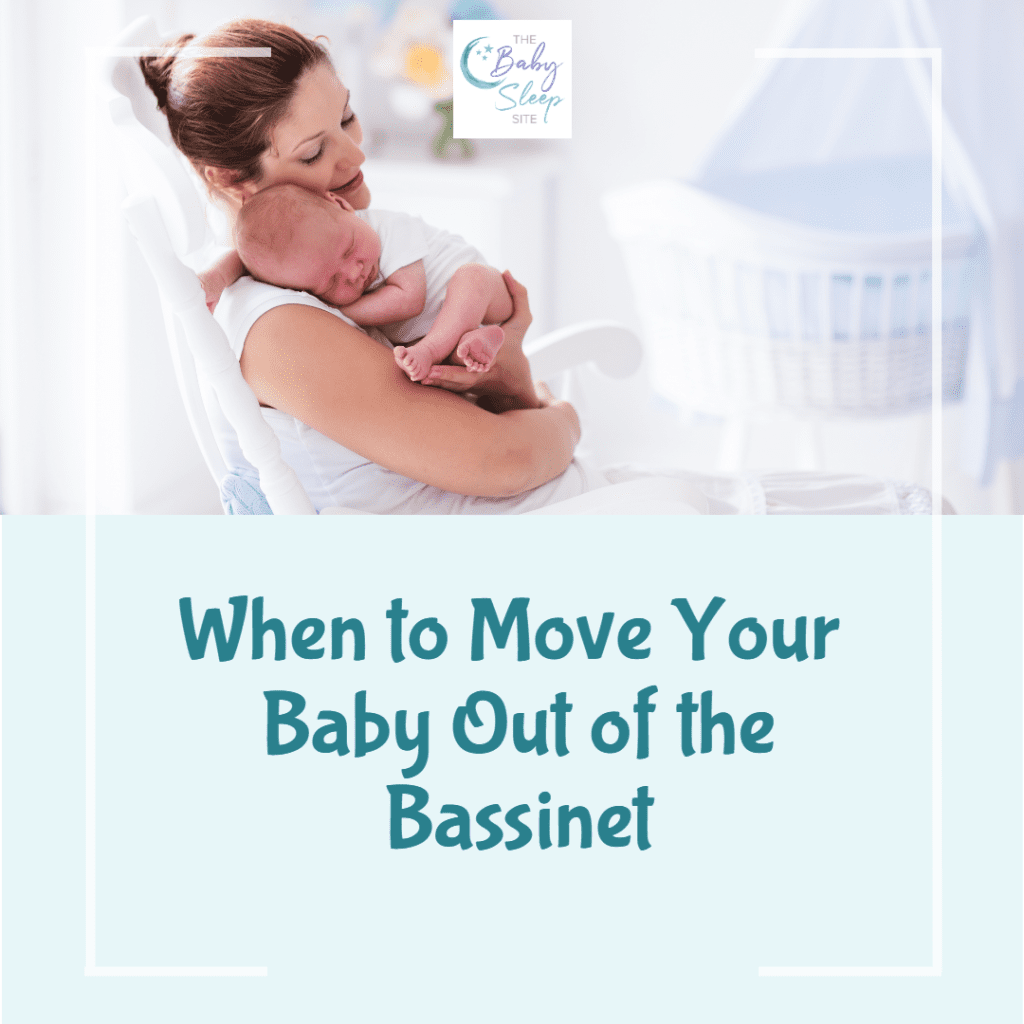
When your baby is born, it’s considered safest to share a room with them for at least the first 6 months. Most parents will put baby in a bassinet near their bed to make night feedings easier. So, at what age and weight should you move baby out of the bassinet? This article will give you all the tips you need for a successful transition!
How Long Should Baby Sleep in a Bassinet?
While it’s not mandatory that baby sleeps in a bassinet at all, a bassinet can help keep baby close when they are a newborn. Newborns sleep 14 to 17 hours a day but it’s often disrupted due to night feedings, day/night confusion, and other newborn sleep problems. Keeping your baby close can mean more sleep for you as a parent.
However, most babies stop sleeping in a bassinet by 4 months old due to safety concerns. While popular bassinets such as the Arms Reach Co-sleeper have 10 to 45-pound weight limits, most experts agree that once your baby can roll over, you should move them to a bigger sleep space.
Here are 3 things to look for when considering moving baby out of the bassinet:
- Developmental Milestones – once baby can roll from back to tummy, pushing up on their hands or knees, or if they are sleeping on their side, consider moving them out of the bassinet.
- Weight – Each bassinet has its own weight limit even within one brand. Be sure to check the manufacturer’s weight limits for your specific bassinet. Happiest Baby recommends moving baby out of the SNOO by 5-6 months old, for example.
- Length – Some taller babies start to feel cramped even before they reach the weight limit. However, keep in mind they were in the womb so feeling snug is not always a bad thing!
If you are questioning whether it’s time to move baby, it’s a good idea to make a plan ahead of time.
Where Does Baby Sleep When Moving Out of the Bassinet?
When moving baby out of the bassinet, the next natural question is, where should they sleep? Most babies will transition to a crib that has different mattress height settings. Some parents will move baby to a Montessori style bed. Finally, some families decide to co-sleep or bed-share. There isn’t a “right” or “wrong” place to put baby out of the bassinet as long as you follow safety protocols.
How to Move Baby Out of the Bassinet
If you have time and don’t have to move baby out of the bassinet abruptly due to a safety issue, I recommend a 1-2 week process. Here is a step-by-step guide:
- Spend time in the new sleep space (such as the crib) during NON-sleep times.
- Start putting baby in the new sleep space for just one sleep period, the same sleep period, every day. I recommend either the first nap of the day or bedtime for the first stretch of sleep. The drive to sleep is strongest at those times.
- After a few days, add another sleep period such as another nap or another stretch of nighttime sleep.
- Every few days, add another sleep period until your baby is sleeping in the new sleep space all the time.
Should You Move Baby to Their Own Room?
While the AAP recommends sharing a room for the first 6 to 12 months, many parents choose this time to move baby to their own room. Room-sharing can disrupt your baby’s sleep as well as your own. Keep safety in mind no matter what you choose.
Can Baby Nap in the Crib and Sleep in the Bassinet at Night?
It is very common for some parents to get baby used to the crib during the day but continue sharing a room at night. They do this by putting baby in the bassinet at night. This is a great solution as long as it’s safe to keep baby in the bassinet. However, keep in mind that day and night sleep are handled by two different parts of the brain so even if baby is used to the crib during the day, it doesn’t mean nighttime sleep will be good, too. It’s a process to help babies sleep in their new sleep space 24×7.
Credit : Source Post




